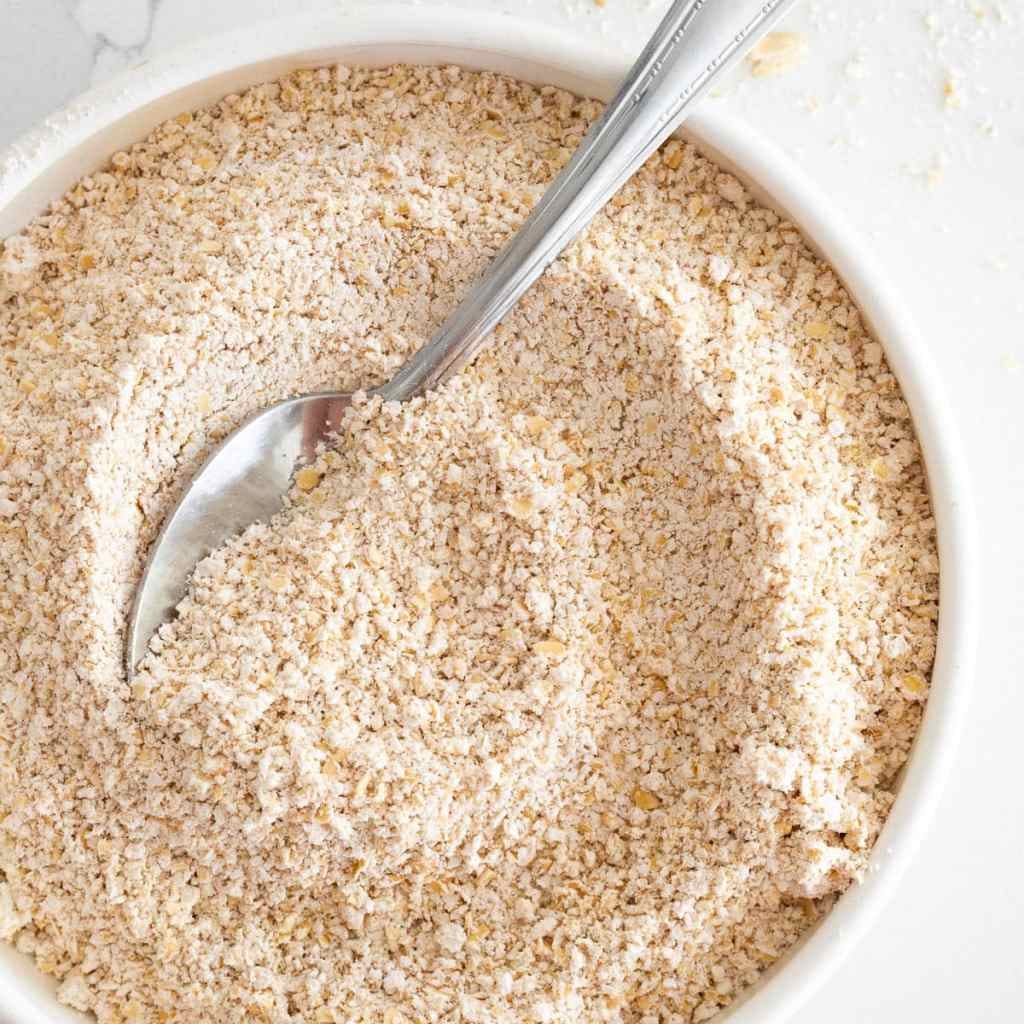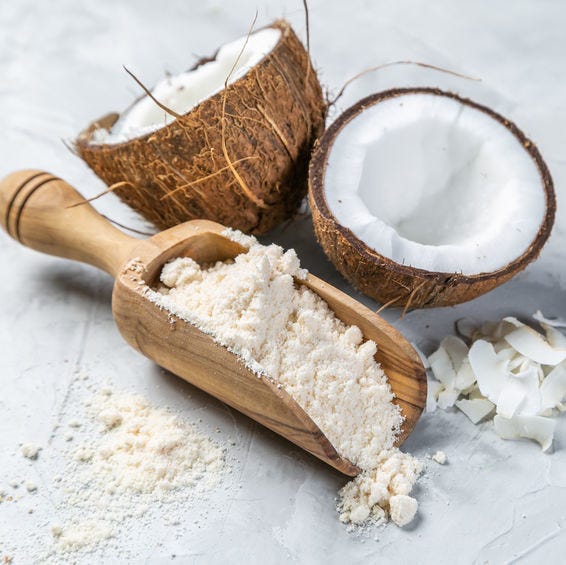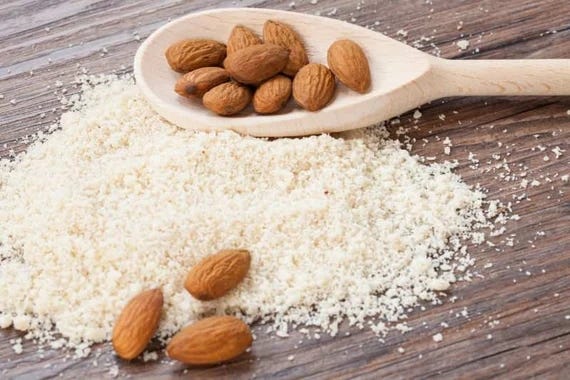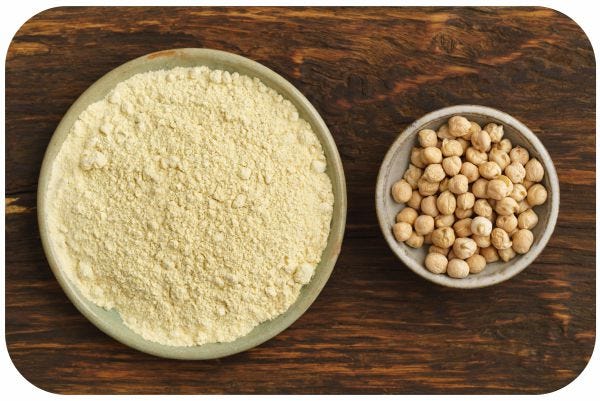The 6 Best Gluten Free Flours
How I Replaced Wheat Flour in my Baking without Compromising on Taste or Texture
One of the first things you might encounter when you've decided to go gluten-free is that most flours you've been using are no longer a safe option. That innocent seeming 'plain' flour is anything but. Don't worry though, there are a plethora of fabulous alternatives to use whether you're baking bread, crafting cookies or just trying to thicken a sauce.
I'm mostly going to focus on replacements for baking, but many of these flours are multi-purpose and can go in just about anything. Just keep in mind that almost none of them are a perfect 1:1 replacement, at least by themselves. You'll need to find the blend that's right for your recipe, which can take some experimentation - but that's half the fun.
1. Oat Flour
Let's start with my personal favourite. The flour I use the most when it comes to baking all manner of delicious treats is one that you can make yourself with a common cupboard staple - oats!
Now, I have an ongoing and passionate romance with oats, which you can read about in this article dedicated solely to the delicious gluten-free grain. Here I'll just stick to how it functions as a flour. If you're ultra lazy then you should be able to find oat flour in a supermarket near you, but it literally takes two minutes to make your own at home - all you need is a food processor and the oats themselves.
Oat flour is a bit thicker and grainier than wheat flour, but that's fine. When you blend it with finer flours, such as coconut or ground almonds the finished product brings a new world of texture and sweet nuttiness to any baked good. When using oat flour in a recipe, you can replace wheat flour at a 1:1 ratio. It works best in cookies and banana breads!
2. Coconut Flour
It's an extremely close call but coconut flour is certainly my second favourite gluten-free flour. Nothing beats the light and fluffy texture and it's what is known as a thirsty flour - it soaks up far more moisture than others.
It's made from dried and ground coconut meat, a byproduct of the coconut milk production process (a win if you're also conscious about sustainability, like me). Thanks to its unique properties it leaves you with a soft and airy finished product that's pure heaven to bite into, with a subtle hint of coconut flavour that doesn't overpower the ingredients you use.
I rarely use it on its own however. Almost always it works best as a blend with another gluten-free flour, such as oat or tapioca. Coconut flour works best in cakes and pastries, but feel free to experiment and see what works best for you.
3. Ground Almonds
Ground almonds are tricky to work with. They have a fabulously silky texture that replaces wheat flour fantastically, but that doesn't come without a few minor drawbacks. Don't let that put you off though, they are still one of the best alternatives for someone who is going gluten-free, provided you aren't unlucky enough to be allergic to nuts.
The reason I say they are tricky is because while they offer a great textural replacement, the sweetness and rich almond flavour can sometimes ovepower the other ingredients you use. It isn't the best in things like banana bread or a muffin for that reason. I recommend pairing it with bold and powerful flavours that aren't subsumed by the almond taste but benefit from the fabulous texture - citrusy olive oil cakes are just divine when made with ground almonds.
4. Brown and White Rice Flour
Both brown and white rice flour are perhaps the closest you can get to a perfect substitute to regular old wheat flour. Brown rice flour is the best, since it provides much needed structure and a wheat-like flavour, while white rice flour is lighter and grittier.
Both work best when paired or blended with other gluten free flours, brown rice flour is pretty all-purpose and can be used in anything from bread to brownies to pizza dough. White rice flour isn't as great for sweet treats but makes a fabulous fritter.
Most of what I bake leans on the sweeter side, which means I often don't use either rice flour and opt instead for my top 3 flours mentioned above, but they are both fabulous choices and freely available in supermarkets for anyone who isn't a fan of oats or has a nut allergy.
If you experiment with rice flour in any of your recipes let me know how it works out in the comments or shoot me a message on any of my socials! I always love hearing about baking and new ways to implement techniques and flavour into my own recipes. It's one of the ingredients I need more practice with.
5. Tapioca Flour
Also known as tapioca starch, this wonderfully white flour has some rather interesting, though niche uses. It's made from the pulp of cassava roots, but don't get it mixed up with actual cassava flour which uses the whole root.
It's super low in sugar and fat, which makes it an optimal choice if you're looking to cut down on those ever present temptations. It has quite a starchy, gummy texture which means it works best to thicken pies or gravies, but don't discount it when it comes to baking your sweet desserts.
When baked, tapioca flour has a crisp and chewy texture. This makes it a perfect addition to cookies that need a bit of crunch - like mint snaps. It also has very little flavour which makes it very adaptable and a great flour to blend with other gluten free flours in any of your recipes.
6. Chickpea Flour
The last flour I'm going to explore in detail is chickpea flour. Of all the gf flours available this one is by far the most nutritious.
Chickpeas are naturally high in fibre and protein and they don't lose any of that when turned into a flour. The rich nutty flavour is quite powerful so you need to be mindful of the flavours you pair it with, but it can bring so much complexity to anything you bake. It creates a fantastic loaf of rich, earthy bread or a deliciously thick and fudgy brownie when blended with oat and coconut flour.
Other Gluten Free Flours
There are a myriad of other options out there if none of the ones I've talked about strike your fancy, or you're simply curious as to the full range of gluten-free alternatives. Common staples include potato flour, cornstarch and buckwheat flour - all of which are best used in savoury goods but have uses beyond that scope.
Less common flours like Teff, Arrowroot, Sorghum or Millet each have their own historic uses and unique properties. My advice would be to test out as many as you can in as many recipes as possible to figure out which particular blend or individual flour suits you best.
No two people have the same pallette after all, so blindly following in someone else's footsteps might leave you unsatisfied after making the switch to being gluten-free. There is one other flour which I'd like to make a special mention about, though it didn't quite make the cut in my top 6. And that's qinuoa flour.
It's rich in calcium and iron and stands out as one of the world's oldest cultivated grains! It's grassy and bitter and works best when blended with other gf flours, but does wonders to cut the sweetness of any pastry or cake that needs it.
There are even more options than the ones I have mentioned in this article, and you may discover on your own other alternatives that work for you. As long as you're having fun and baking delicious food then that's the most important thing!
Let me know what you think of the various gluten free flours. Which one is your favourite? Which ones have you found don't work that well or go amazing in a specific recipe? Leave a comment or find me on instagram @ariana.in.abundance









